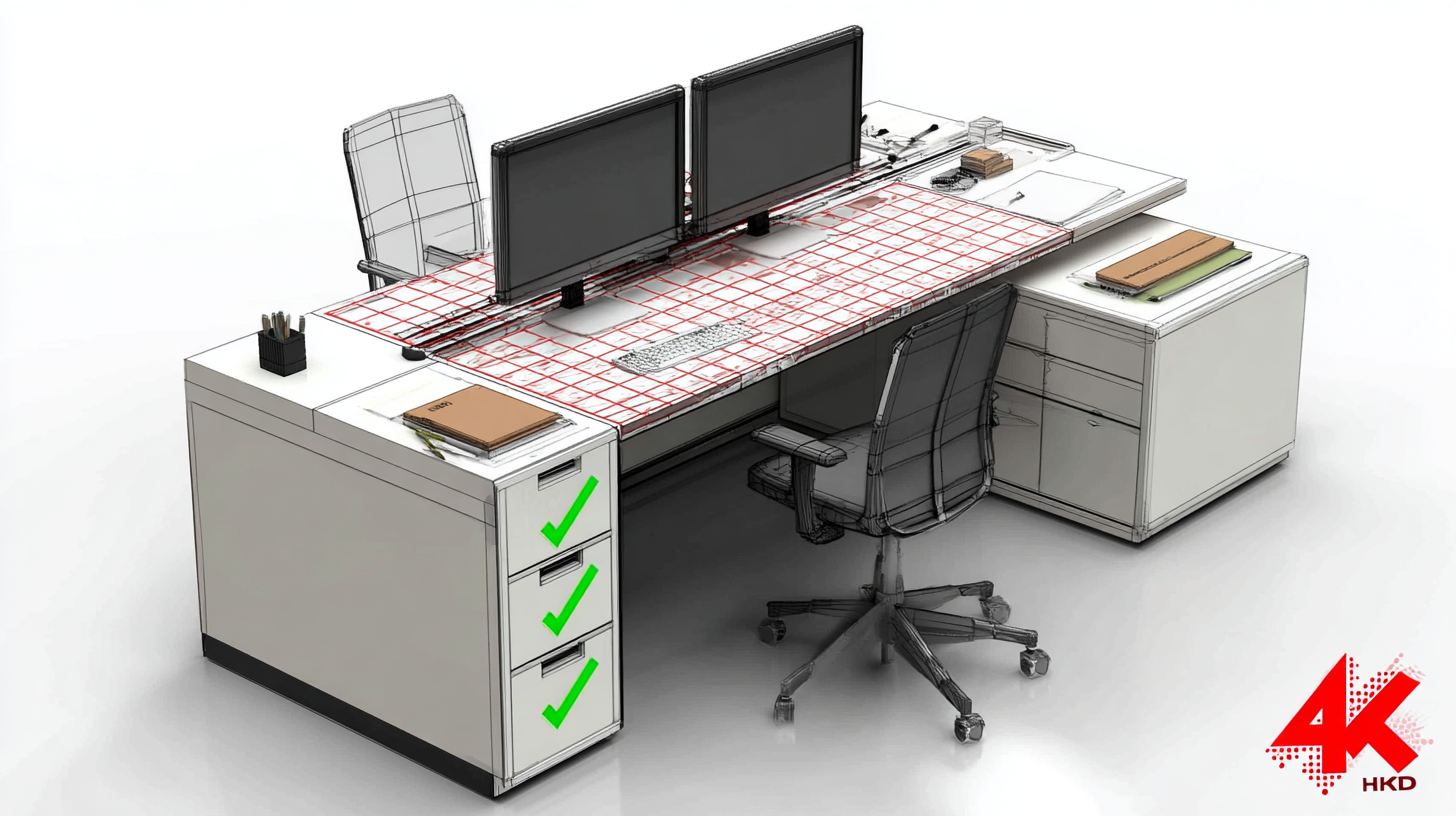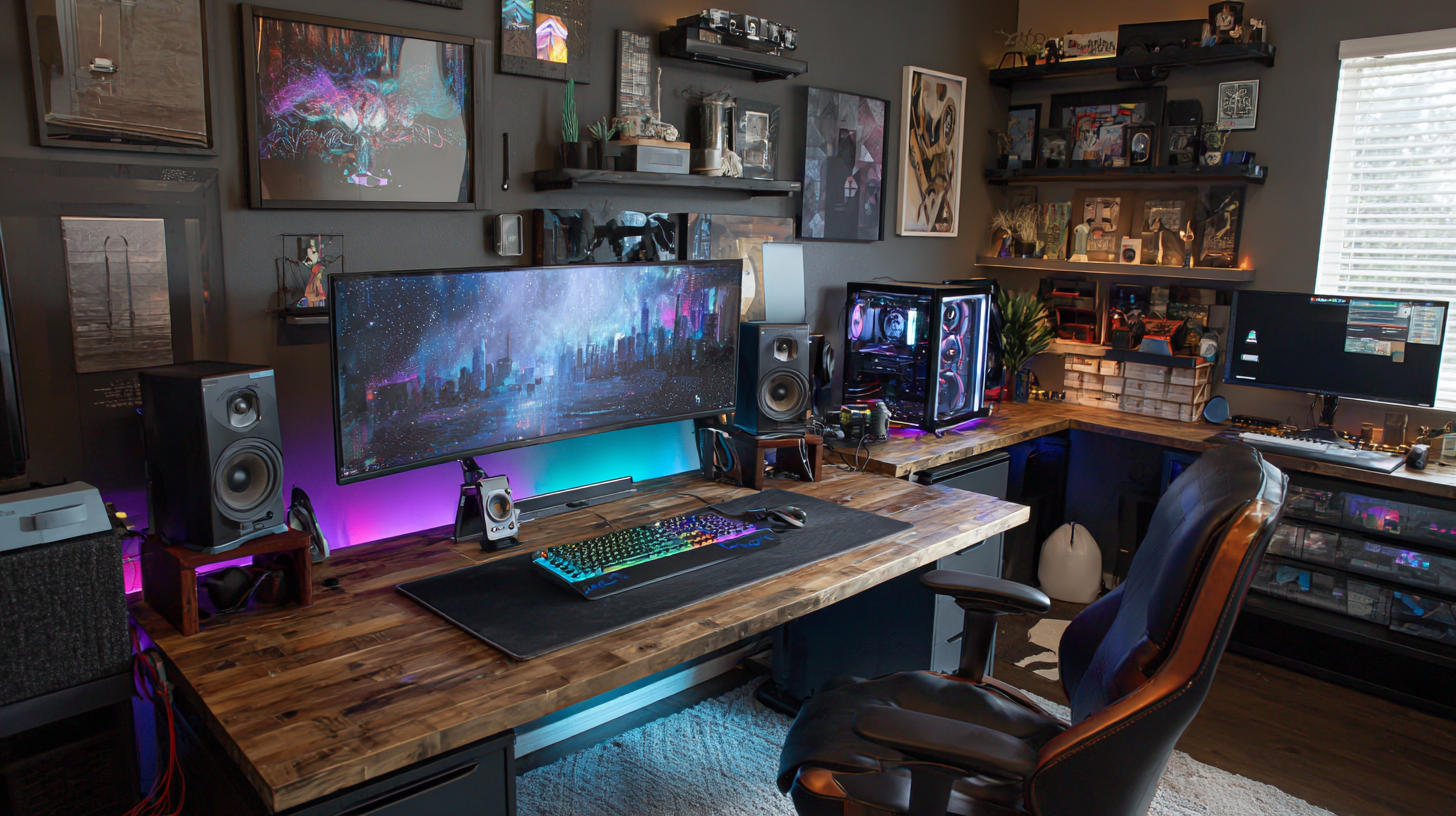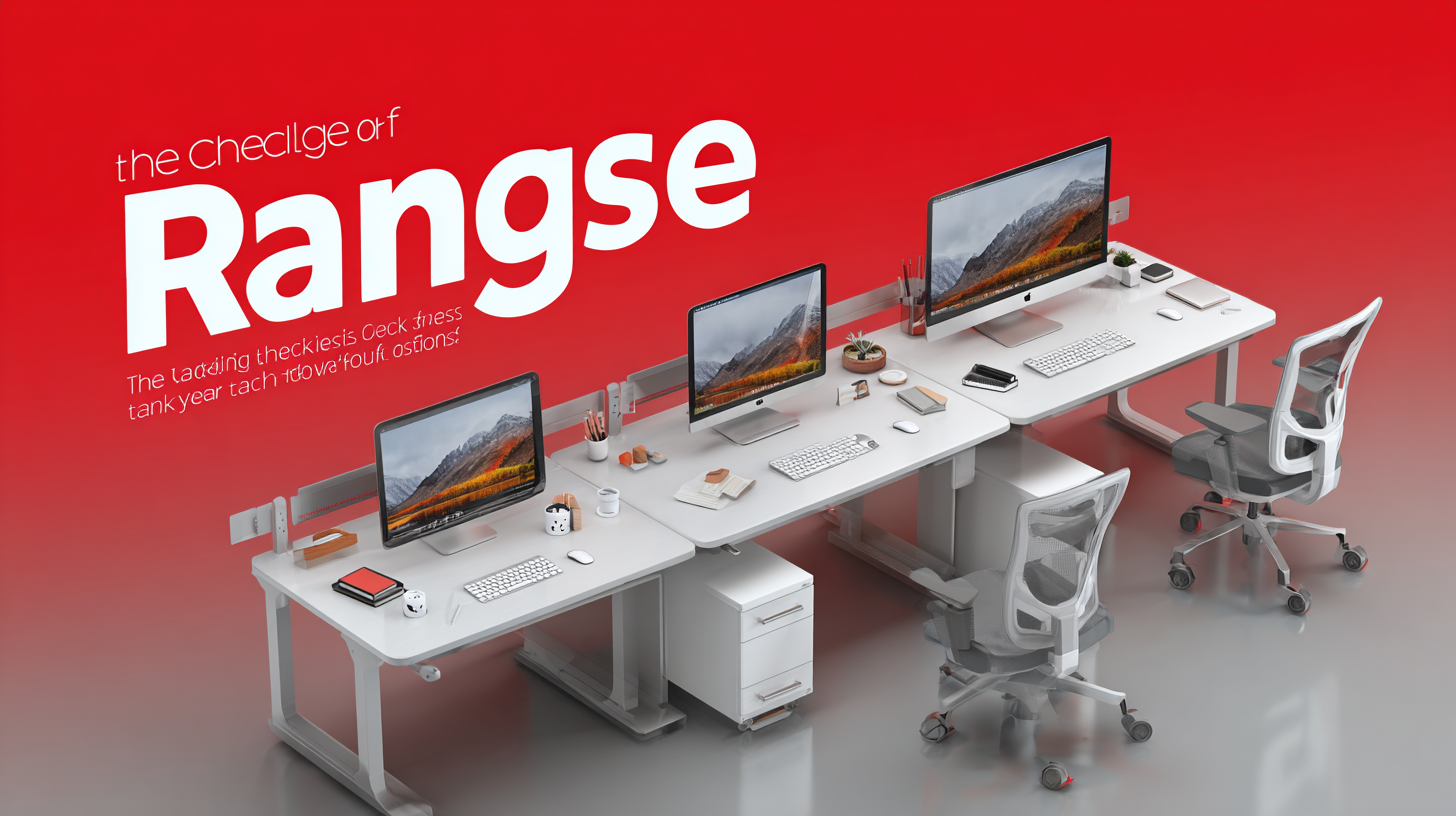Largest Selection of New and Used Office Furniture! Call 1-855-885-3375 or visit a showroom today!
Blog
The Ultimate Checklist for Choosing the Best Range Desks: Key Features and Stats You Can't Ignore
In today's fast-paced work environment, the importance of choosing the right furniture cannot be overstated, especially when it comes to the range desks that form the cornerstone of productivity. According to a report by Global Industry Analysts, the office furniture market is projected to reach a staggering $93 billion by 2027, with a significant emphasis on ergonomic designs and flexible workstations. Beyond aesthetics, the right range desks are pivotal for promoting employee well-being and efficiency, as studies show that an ergonomic workspace can increase productivity by up to 15%. With remote work becoming more prevalent, the demand for versatile and functional desks continues to rise, making it essential for businesses and individuals alike to understand the key features and statistics that should guide their selection process. This ultimate checklist will outline crucial considerations that ensure a smart investment in range desks that meet both aesthetic desires and functional needs.

Key Features to Look for in a Quality Range Desk
When it comes to selecting the ideal range desk, several key features can significantly enhance your workspace efficiency and comfort. First and foremost, adjustability is essential. A desk that allows you to switch between sitting and standing not only improves posture but also helps maintain energy levels throughout the day. Look for those with a motorized or manual height adjustment mechanism, ensuring ease of use tailored to your personal preferences.

Another crucial aspect is the durability of the materials used in the desk's construction. Desks made of high-quality wood or robust metal frames tend to withstand daily wear and tear better than their cheaper counterparts. Additionally, consider the workspace layout; desks with built-in cable management systems can help keep your area tidy and organized. Do not overlook other features such as built-in storage options, which can maximize space efficiency, and ergonomic designs that support healthy working habits. Investing in a quality range desk that incorporates these elements will ultimately lead to a more productive and comfortable work environment.
Understanding the Latest Trends in Range Desk Manufacturing
In recent years, the landscape of range desk manufacturing has undergone significant transformations, driven by evolving workplace needs and advancements in technology. One of the most notable trends is the rise of ergonomic designs, which prioritize user comfort and health. Manufacturers are increasingly incorporating adjustable features that allow users to seamlessly switch between sitting and standing positions. This not only fosters greater productivity but also addresses concerns related to sedentary lifestyles. As awareness of physical well-being grows, the demand for desks that support active working habits continues to rise.
Another key trend shaping the range desk industry is the integration of smart technologies. Modern desks are beginning to incorporate features such as built-in wireless charging stations, USB ports, and connectivity options for smart devices. This technological advancement enhances user convenience and creates a more seamless working experience. Additionally, manufacturers are exploring sustainable materials in their designs, reflecting a broader commitment to environmental responsibility. By leveraging eco-friendly materials and production methods, creators are not only appealing to environmentally conscious consumers but also ensuring that their products align with the growing trend of sustainability in the workplace.
The Ultimate Checklist for Choosing the Best Range Desks
This chart illustrates the key features to consider when choosing the best range desks, with their importance levels rated on a scale from 1 to 10. Adjustable height is deemed the most critical feature, while cable management is of relatively less importance.
How to Evaluate Durability and Performance of Range Desks
When selecting range desks, evaluating their durability and performance is crucial to ensure they meet the demands of a busy workspace. Recent guidelines released by the relevant authorities highlight the significance of adhering to high standards in office furniture, aimed at promoting efficient and cost-effective procurement practices. Hence, it's essential to understand what makes a range desk reliable and long-lasting.

Tip 1: Look for materials that withstand wear and tear. Desks made of high-quality laminate or solid wood tend to offer better durability compared to cheaper alternatives. Also, consider the thickness of the desk surface; thicker surfaces are generally more resistant to dents and scratches.
Tip 2: Assess the construction quality. A well-constructed desk will have sturdy joints and reinforced components. Check for features such as adjustable legs, which can enhance stability and facilitate a more ergonomic setup.
Tip 3: Test the performance aspects including weight capacity, ease of movement, and finish quality. A desk that provides smooth functionality, whether it’s adjustable height or seamless drawers, will contribute significantly to workplace efficiency.
Essential Ergonomic Considerations for Your Workspace
When selecting the ideal range desk for your workspace, ergonomic considerations should take center stage. Research from the Occupational Safety and Health Administration (OSHA) indicates that poor workstation ergonomics can lead to musculoskeletal disorders (MSDs), which affect over 1 million workers each year in the U.S. Investing in an ergonomic desk can significantly reduce the risk of these injuries. For example, adjustable-height desks that allow users to alternate between sitting and standing can decrease the prevalence of neck and back pain by up to 54%, according to a study published in the Journal of Environmental Health.
Moreover, the impact of workspace design on productivity cannot be overlooked. A survey by Steelcase found that employees who work in ergonomically optimized environments are 10% more productive than those who do not. Features such as a desk with properly aligned screens, comfortable seating, and adequate space for movement contribute to improved focus and overall job satisfaction. As such, understanding key ergonomic principles, like desk height and monitor position, is essential for creating a workspace that not only promotes health but also enhances efficiency.
Comparative Analysis of Range Desk Price Points and Value
When selecting the ideal range desk, it's essential to consider price points relative to the features offered. According to a report by the Office Furniture Dealers Association (OFDA), the average cost of a range desk falls between $300 and $800, depending on various elements such as material, size, and ergonomic features. Key statistics indicate that well-designed range desks can promote productivity by up to 15%, justifying a potential higher investment for an ergonomically sound desk.
When evaluating value, note that adjustable height desks typically command a premium—an average of 20-30% over fixed models. However, studies show that sitting less and standing more can significantly reduce health issues, like musculoskeletal disorders, making this investment worthwhile.
**Tip:** Look for desks that offer a combination of quality materials and desired adjustability to ensure longevity and comfort.
Additionally, consider warranty and customer support options; items with a longer warranty often reflect better built quality and manufacturer confidence.
**Tip:** Compare warranties across manufacturers to find the best blend of quality assurance and value.
The Ultimate Checklist for Choosing the Best Range Desks: Key Features and Stats You Can't Ignore
| Feature | Description | Average Price ($) | Value Rating (1-5) |
|---|---|---|---|
| Material Quality | Desks made of solid wood or metal tend to offer better durability. | 300 | 4 |
| Desk Height Adjustability | Manual or electric height adjustment features for ergonomic use. | 400 | 5 |
| Surface Area | Adequate surface area for monitors, paperwork, and other accessories. | 250 | 4 |
| Cable Management | Design features that help organize wires and prevent clutter. | 100 | 3 |
| Warranty | Length of warranty period indicates manufacturer confidence. | 150 | 4 |
